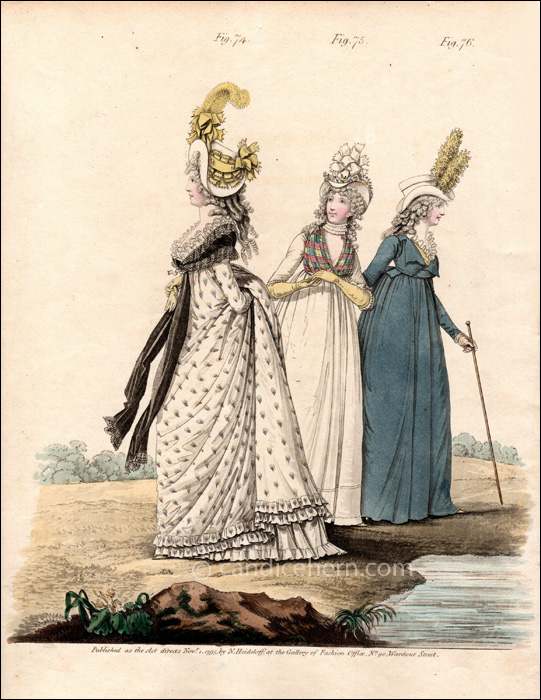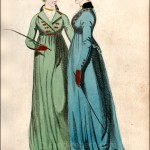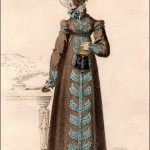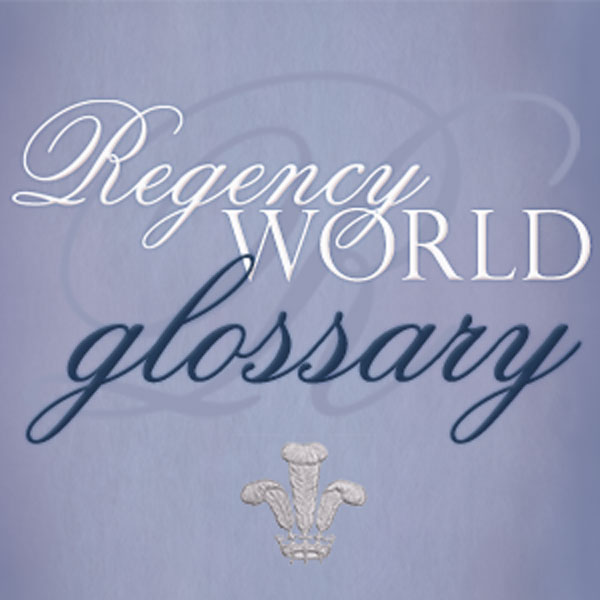Gallery of Fashion, November 1795.
The title above the description of this print is “Morning Dresses.” Clearly these are two morning walking dresses and a riding habit.
 The dresses and the habit show the fullness in the skirt, especially in the back, that was prevalent at this time, before the silhouette narrowed in the next century. The dress on the left almost appears to be a printed fabric, but is actually an embroidered muslin, beautifully hand-colored in the print. The hats are elaborately decorated, with height provided by tall feathers and bows. In 20 years, the hat itself will provide the height. The habit includes a waistcoat beneath the jacket, which was typical throughout most of the 18th century for women’s habits, which were more closely designed after male garments by male tailors. But we seldom see waistcoats in the early 19th century. This print may represent the last gasp of the lady’s waistcoat.
The dresses and the habit show the fullness in the skirt, especially in the back, that was prevalent at this time, before the silhouette narrowed in the next century. The dress on the left almost appears to be a printed fabric, but is actually an embroidered muslin, beautifully hand-colored in the print. The hats are elaborately decorated, with height provided by tall feathers and bows. In 20 years, the hat itself will provide the height. The habit includes a waistcoat beneath the jacket, which was typical throughout most of the 18th century for women’s habits, which were more closely designed after male garments by male tailors. But we seldom see waistcoats in the early 19th century. This print may represent the last gasp of the lady’s waistcoat.
The print is described in the magazine as follows:
“Fig. LXXIV. The hair dressed in light curls; the hind hair turned under, and the ends returned in ringlets. Caroline hat of white satin, trimmed with yellow satin riband; yellow feather place in the front bow. Round gown of muslin, embroidered in colours; long sleeves; double flounce at the bottom. Double trimming round the neck. Black satin cloak, trimmed with broad black lace. Jonquille coloured gloves and shoes.
“Fig. LXXV. The hair in curls and ringlets. White patent hat made of raw silk, trimmed with plaid silk, scolloped, and white riband. Round gown of India long cloth; short sleeves, trimmed with lace; a broad hem and tuck at the bottom.Two rows of full plating round the neck. Yellow gloves and shoes.
“Fig. LXXVI. The hair in curls and ringlets; the hind hair turned up plain. White patent hat made of raw silk; two yellow craped feathers in the front. Riding dress of grey cloth. Waistcoat of yellow silk. Riding handkerchief, trimmed full round the neck. York tan gloves. Yellow shoes.”







